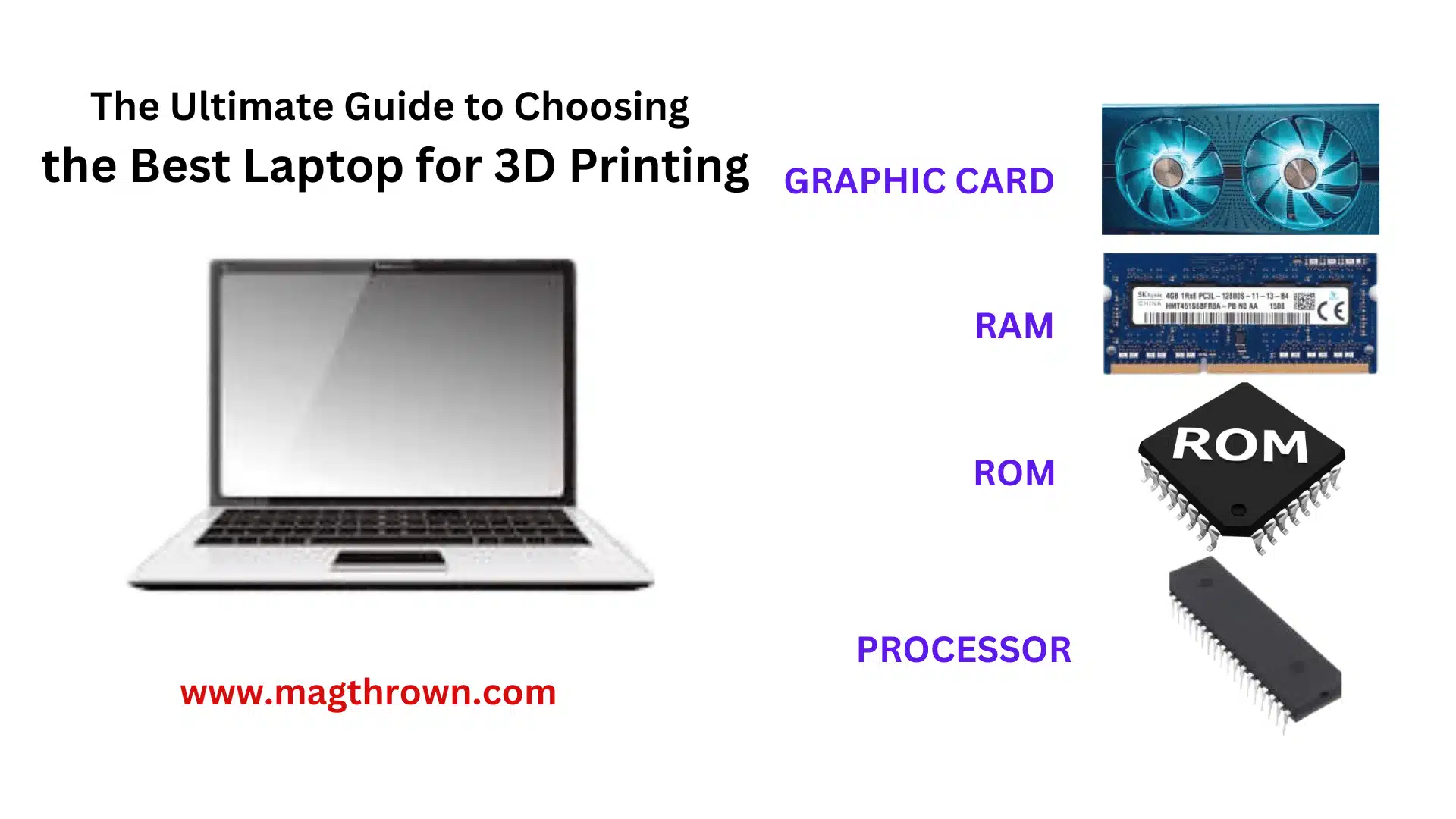Introduction
With laptop 3D printing becoming an ever-increasing global craze, having the right tools for the task is increasingly crucial.
A powerful laptop with sufficient horsepower is essential for successful 3D printing at home or in the office. In this guide, we will outline key factors and options.
when selecting a laptop specifically tailored for 3D printing, as well as providing some advice from industry professionals about which models may best serve their needs.
Processing Power Of Best Laptop For 3D Printing
A laptop’s processing power is crucial when it comes to 3D printing. The faster your processor can render complex 3D models and execute slicing software, the quicker It can render complex models for rendering and cutting software.
Look for laptops equipped with Intel Core i7 or AMD Ryzen 7 processors. These offer exceptional performance in managing tasks performed by 3D printing software.
Graphics Performance Of Best Laptop For 3D Printing
Because it involves rendering highly intricate models and designs, a laptop with exceptional graphics performance is necessary.
While integrated graphics cards may suffice for basic 3D printing tasks, for more complex designs,
It would be wiser to purchase one equipped with dedicated NVIDIA GeForce GTX or RTX series graphics cards,
Which provides sufficient horsepower to render intricate 3D models smoothly while handling intensive tasks smoothly.
RAM and Storage Of Best Laptop For 3D Printing
To optimize multitasking performance and handle large files efficiently, aim for at least 8 GB of RAM on your laptop.
Similarly, storage should also be taken seriously for 3D printing projects – consider solid-state drives (SSD) to speed up data access/load times.
While a hybrid HDD/SSD combination offers both speed and ample storage capacity.
Display and Resolution
For 3D printing, having a laptop with an accurate, high-resolution, and color-accurate display is crucial.
Aim for Full HD (1920×1080) or higher resolution laptops, as these will help ensure accuracy with each detail in your 3D models.
IPS panels offer wider viewing angles and better color reproduction; perfect for capturing those tiny details that matter!
Connectivity Options
It is crucial that when connecting your 3D printer to your laptop, you have the necessary connectivity options available to you. USB 3.0 ports offer fast data transfer rates, which is essential when sending large files across.
Having HDMI or DisplayPort ports available could also be useful if you want to connect external monitors for increased workspace capabilities.
Portability and Battery Life
To maximize productivity while on-the-go 3D printing, take into account your laptop’s portability and battery life. Look for lightweight laptops that are easy to transport while featuring long-life batteries to ensure productivity without interruption.
Top Laptop Recommendations
Dell XPS 15
The Dell XPS 15 is an outstanding option for 3D printing professionals, as it comes equipped with an Intel Core i7 processor, NVIDIA graphics, up to 32GB of RAM, and a beautiful 4K display.
HP Spectre x360
With its convertible design, this laptop combines power and versatility. This model, featuring Intel Core i7 processors, NVIDIA GeForce graphics up to 16 GB of RAM, and a touch-enabled display, is ideal for creative professionals working with 3D printing.
Lenovo ThinkPad P1
This workstation-class laptop features an Intel Core i7 processor, professional NVIDIA Quadro graphics cards up to 64GB of RAM, and a color-accurate display—ideal for managing complex 3D printing projects.

ASUS ROG Zephyrus G14
For those in search of an ideal laptop to support 3D printing and gaming, this ASUS ROG Zephyrus G14 model makes an excellent selection.
The device features an AMD Ryzen 9 processor, NVIDIA GeForce RTX graphics, 32GB RAM, and a high refresh-rate display for exceptional 3D performance.
Table: Best Laptop For 3D Printing
| Attributes | Description |
|---|---|
| Processor | Specifications and recommended processing power for handling 3D printing software. |
| RAM & Storage | Capacity required to run design software smoothly and store 3D models efficiently. |
| Graphics & Display | Details on the GPU, display resolution, and compatibility for rendering 3D designs. |
| Connectivity & Ports | Essential ports and connectivity options for linking with 3D printers and peripherals. |
| Battery Life & Durability | Battery performance and durability for uninterrupted design work and long-term usage. |
FAQs for “Best Laptop For 3D Printing: The Ultimate Guide”
What Processor Specs Are Ideal for Running 3D Printing Software?
The recommended processor specifications often include multi-core processors with higher clock speeds for seamless running of 3D printing software. Look for Intel Core i7 or equivalent AMD Ryzen processors for optimal performance.
How Much RAM and Storage Capacity Should the Laptop Have for 3D Printing?
A laptop with at least 16GB RAM and ample storage (512GB SSD or higher) is recommended for smooth operations. This facilitates handling complex 3D models and software without slowdowns.
What Graphics Features are Crucial for 3D Printing Laptops?
A dedicated GPU with substantial VRAM is essential for rendering intricate 3D designs. Look for laptops featuring NVIDIA GeForce or AMD Radeon graphics cards for efficient rendering.
Which Connectivity Options Should I Consider for a 3D Printing Laptop?
Essential connectivity includes multiple USB ports (preferably USB 3.0/3.1), HDMI or DisplayPort for external monitors, and a reliable Wi-Fi connection for software updates and model sharing.
What Battery Life and Durability Should I Expect in a Laptop for 3D Printing?
Aim for a laptop with at least 6-8 hours of battery life for uninterrupted design sessions. Durability features like sturdy build quality and efficient cooling systems are also crucial for long-term usage.
Conclusion Of Best Laptop For 3D Printing
Consider processing power, graphics performance, RAM storage performance, RAM storage display connectivity options, and portability when making your decision and exploring.
The top recommendations mentioned herein will help you make an informed choice and kick-start your 3D printing venture successfully.

